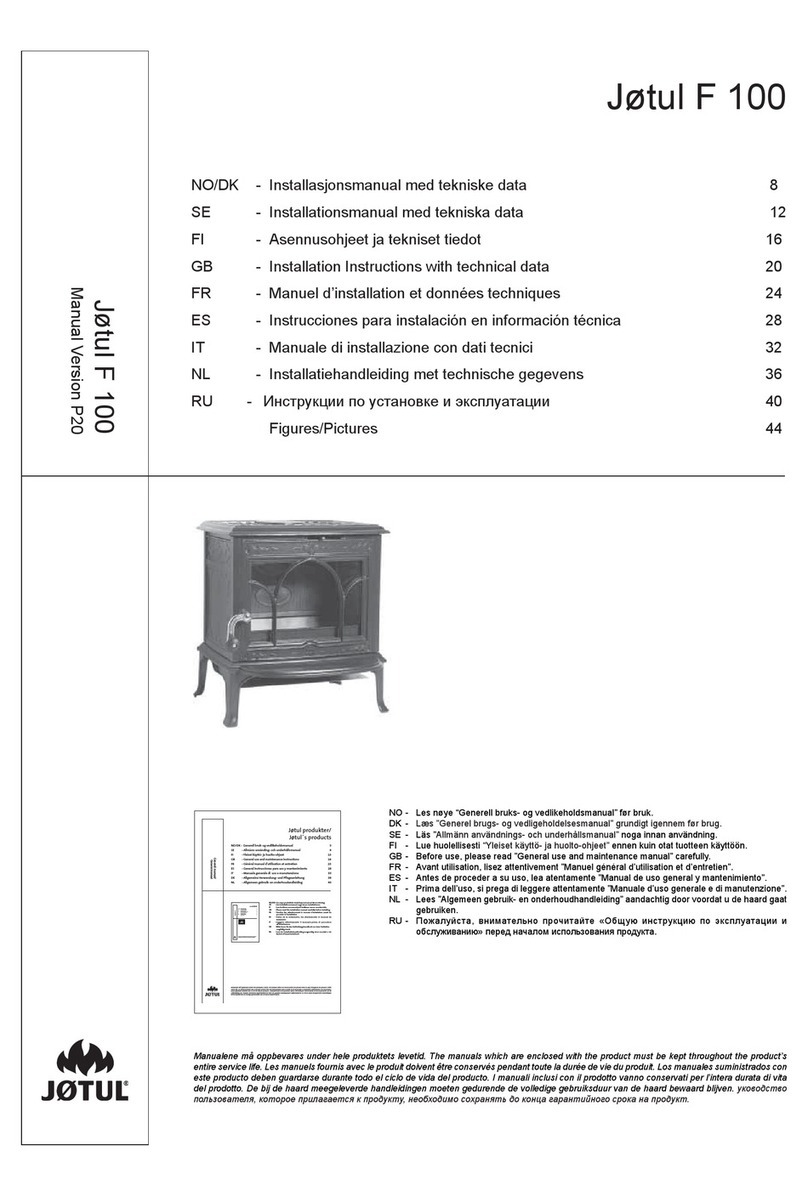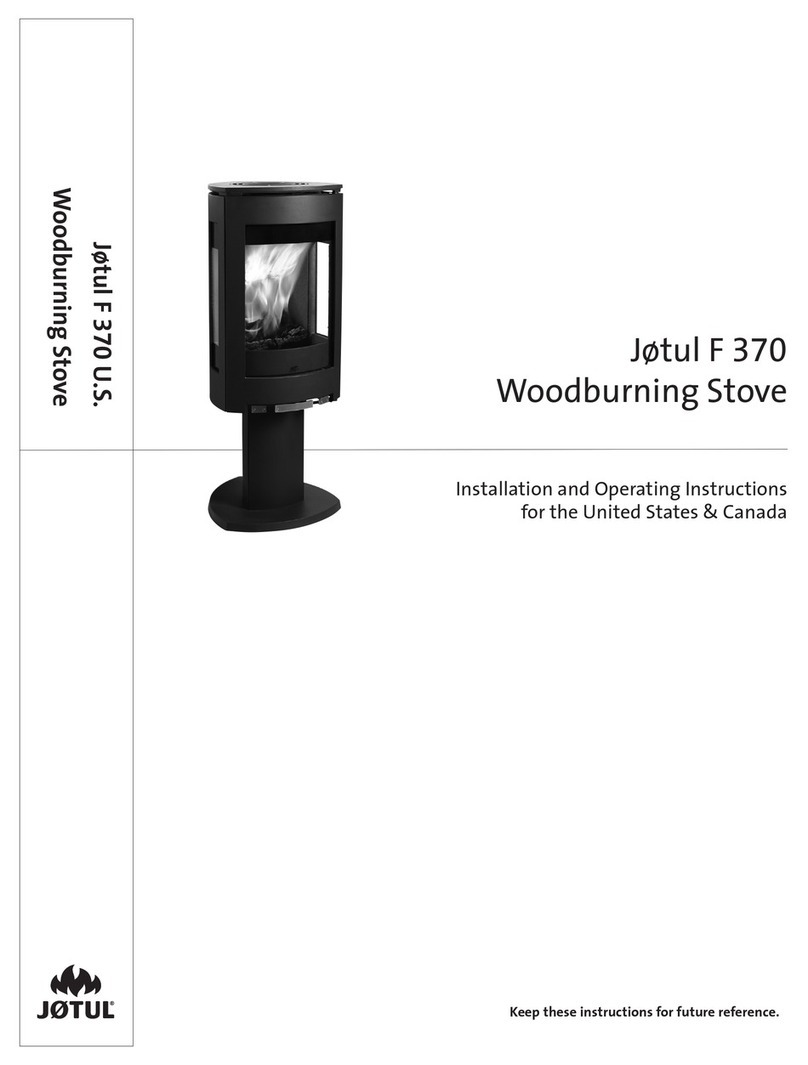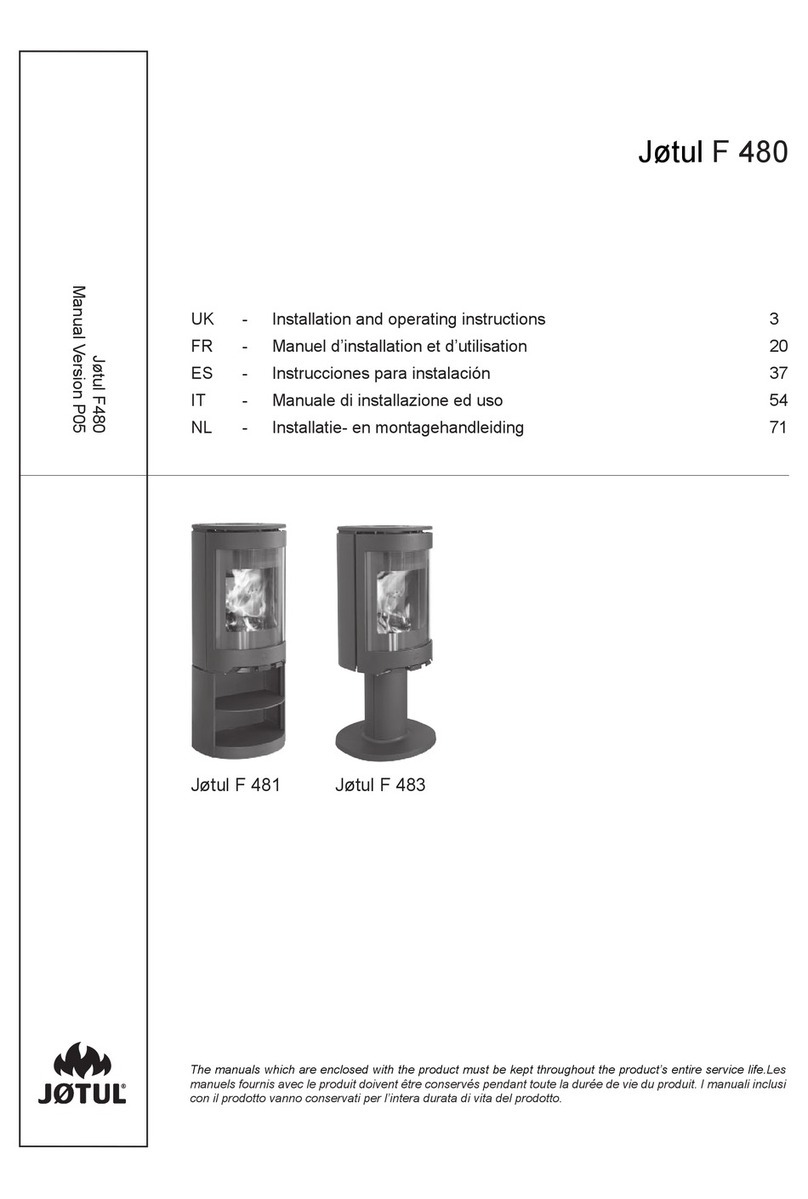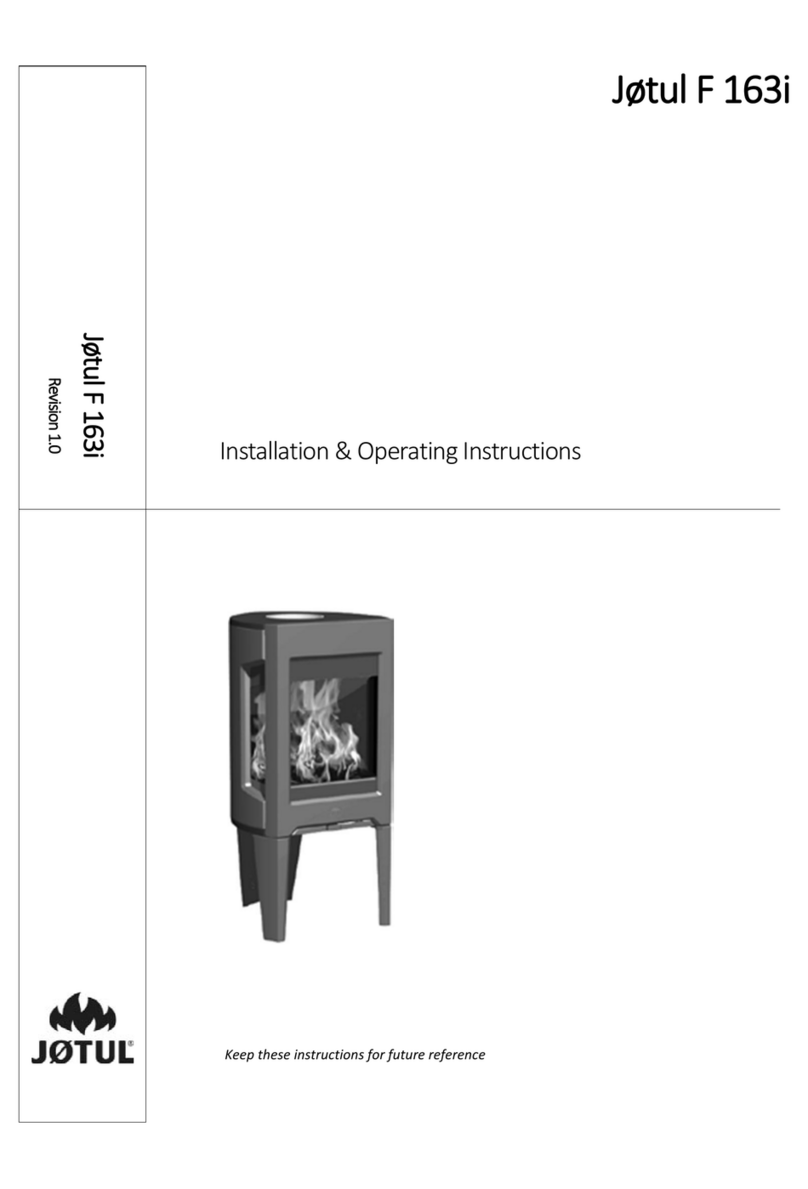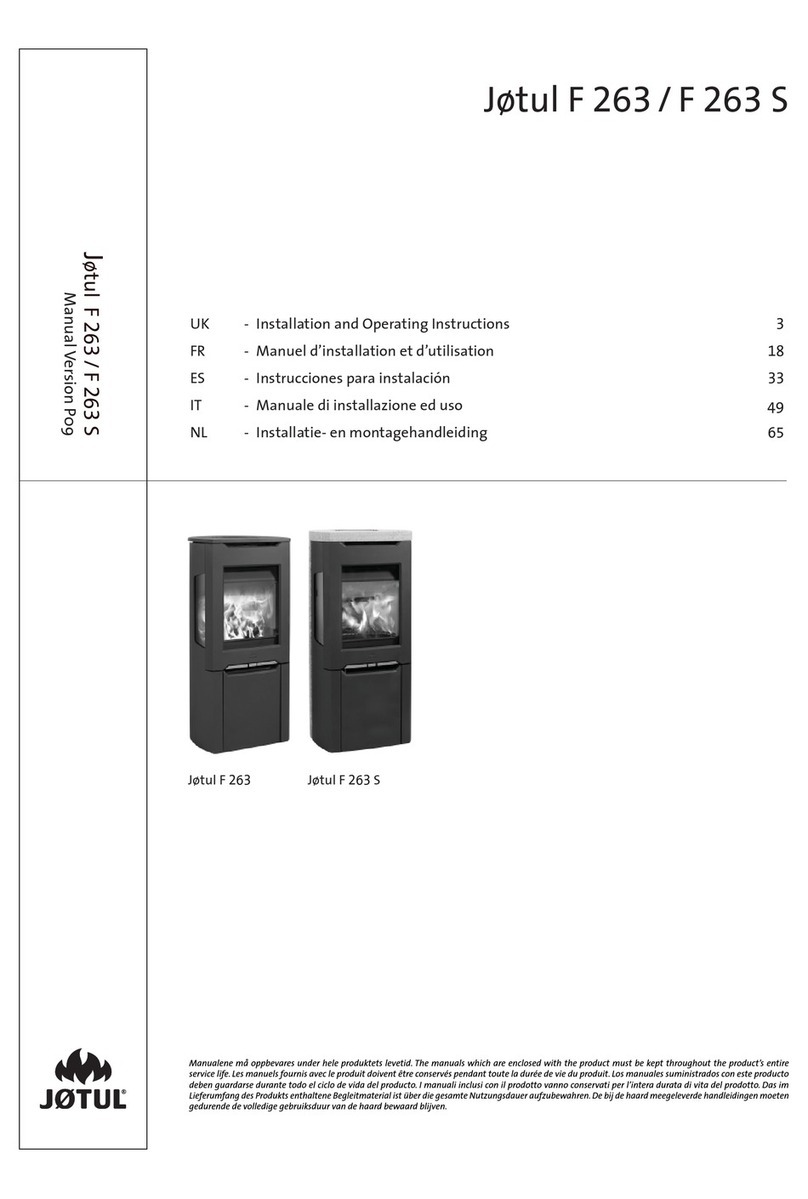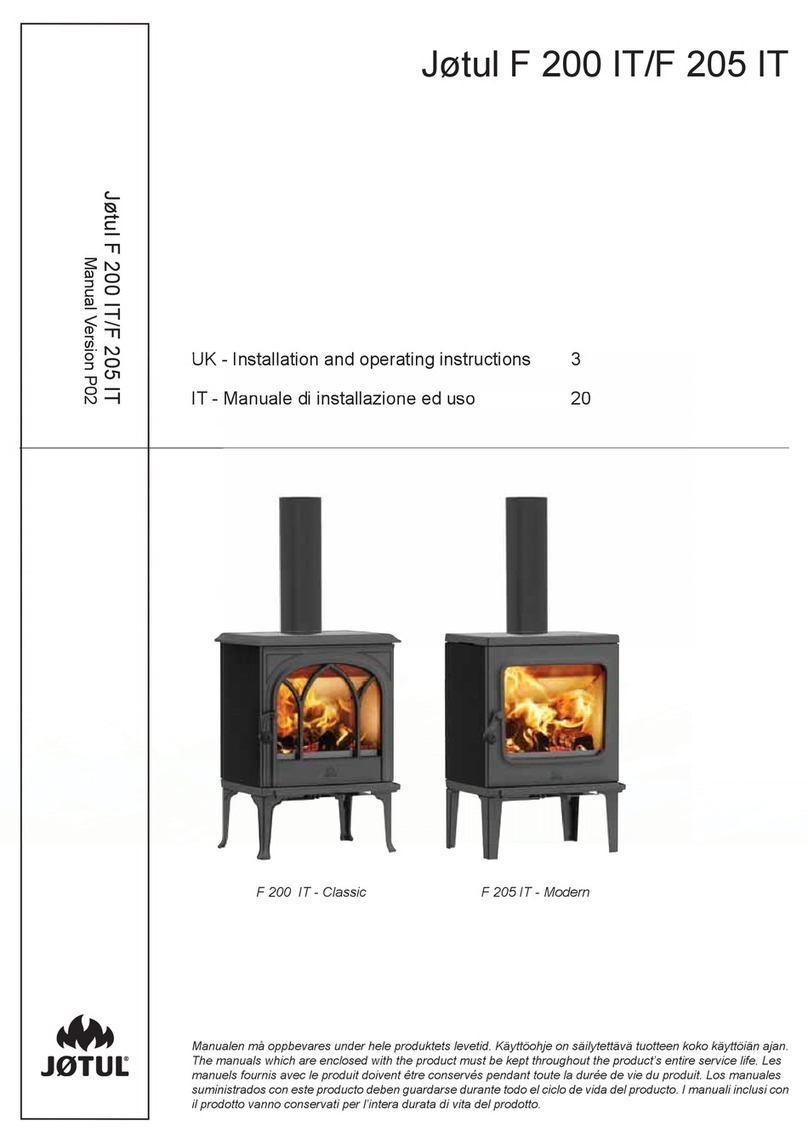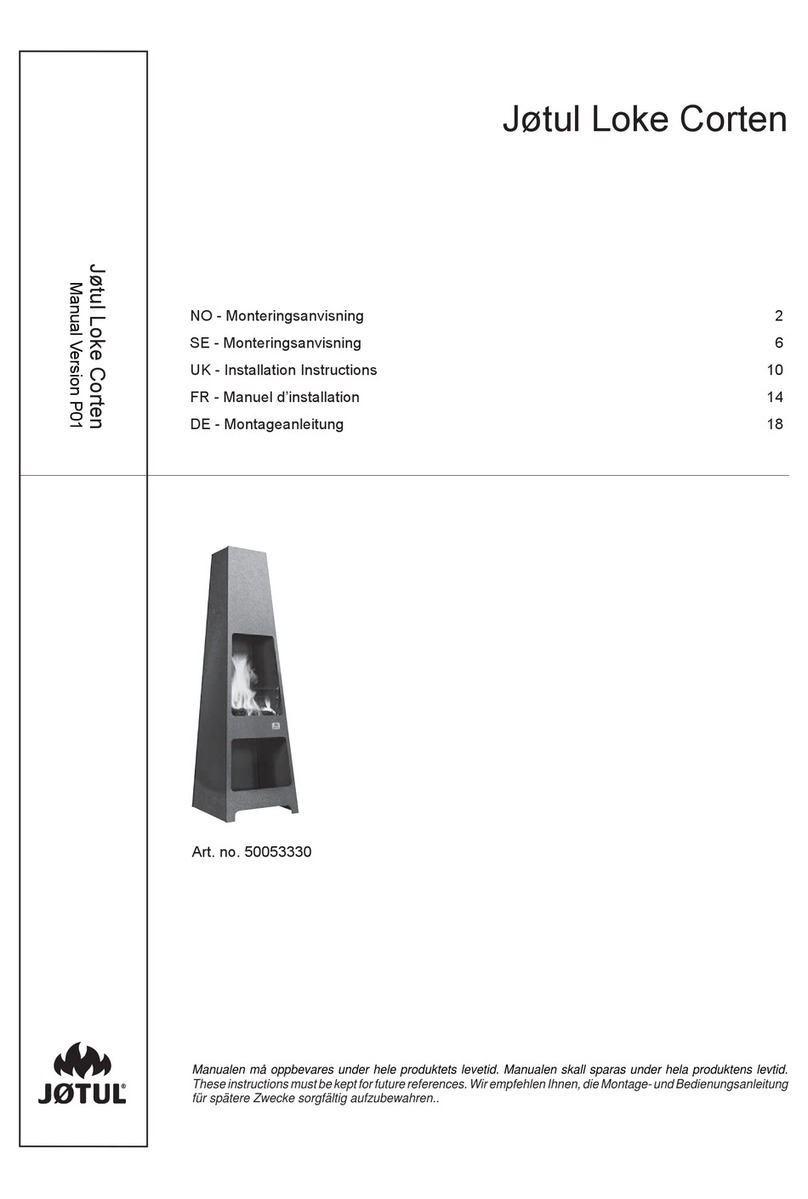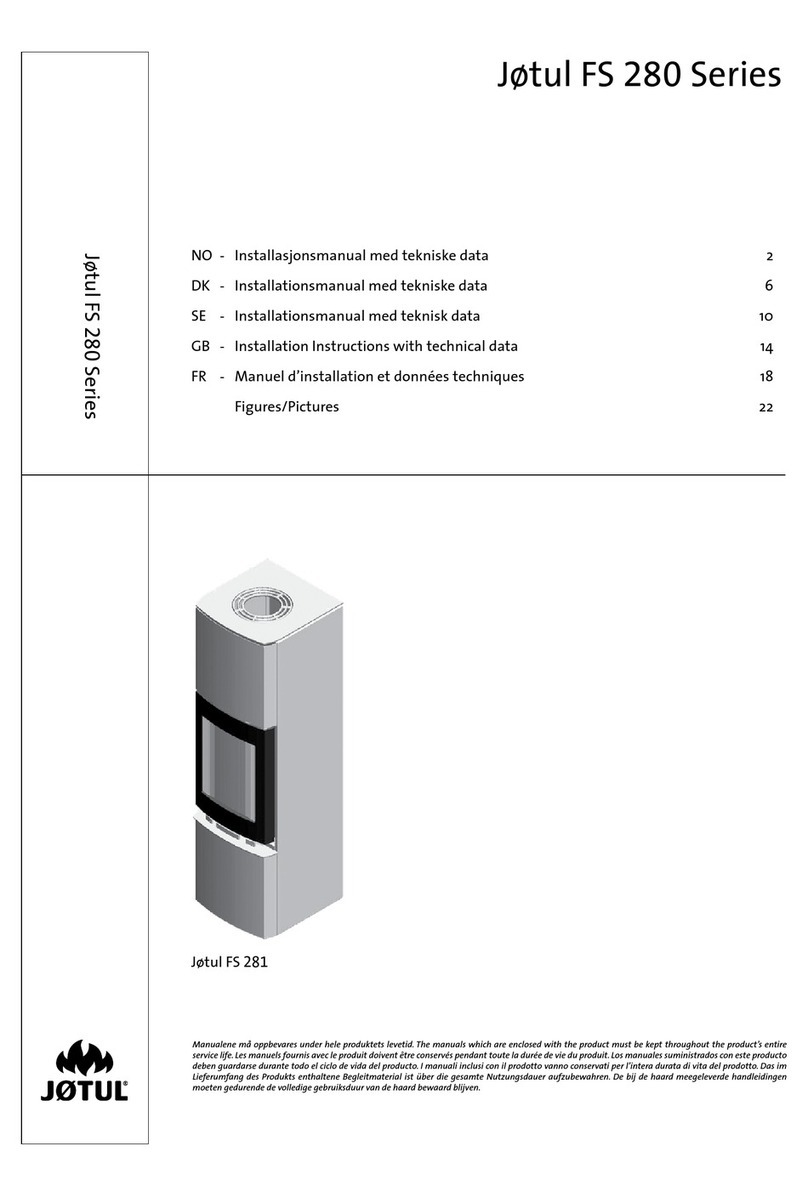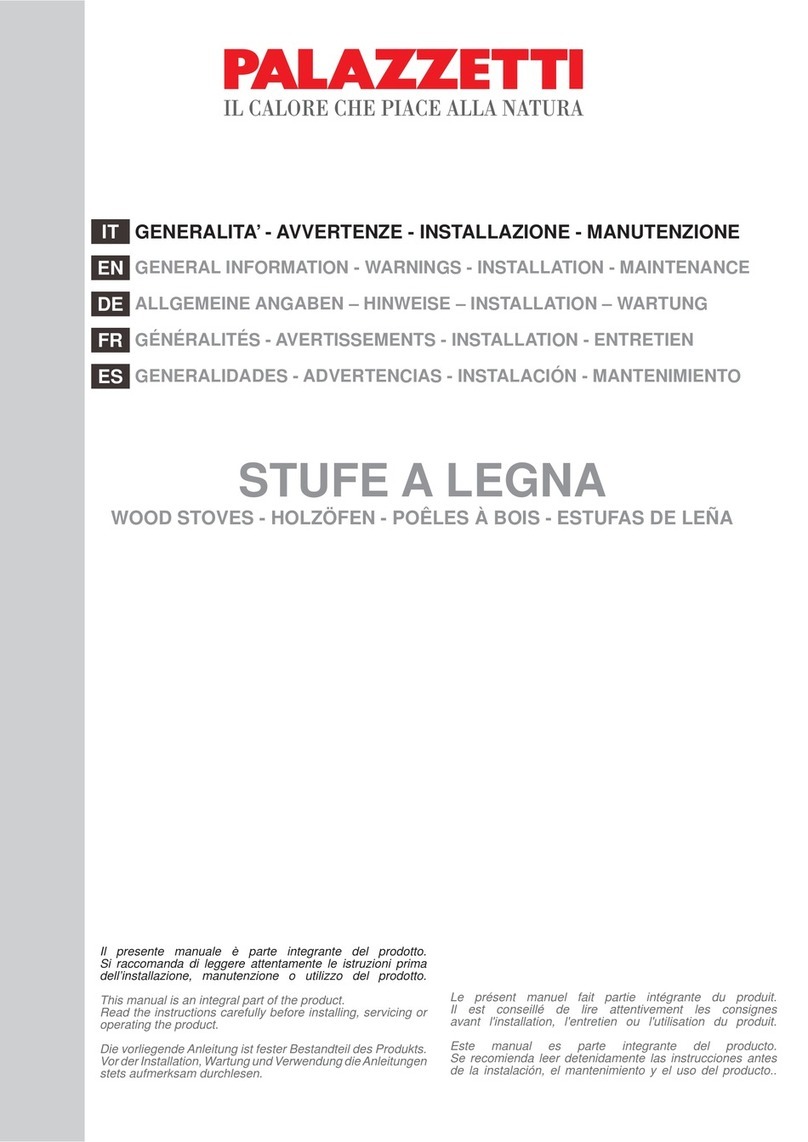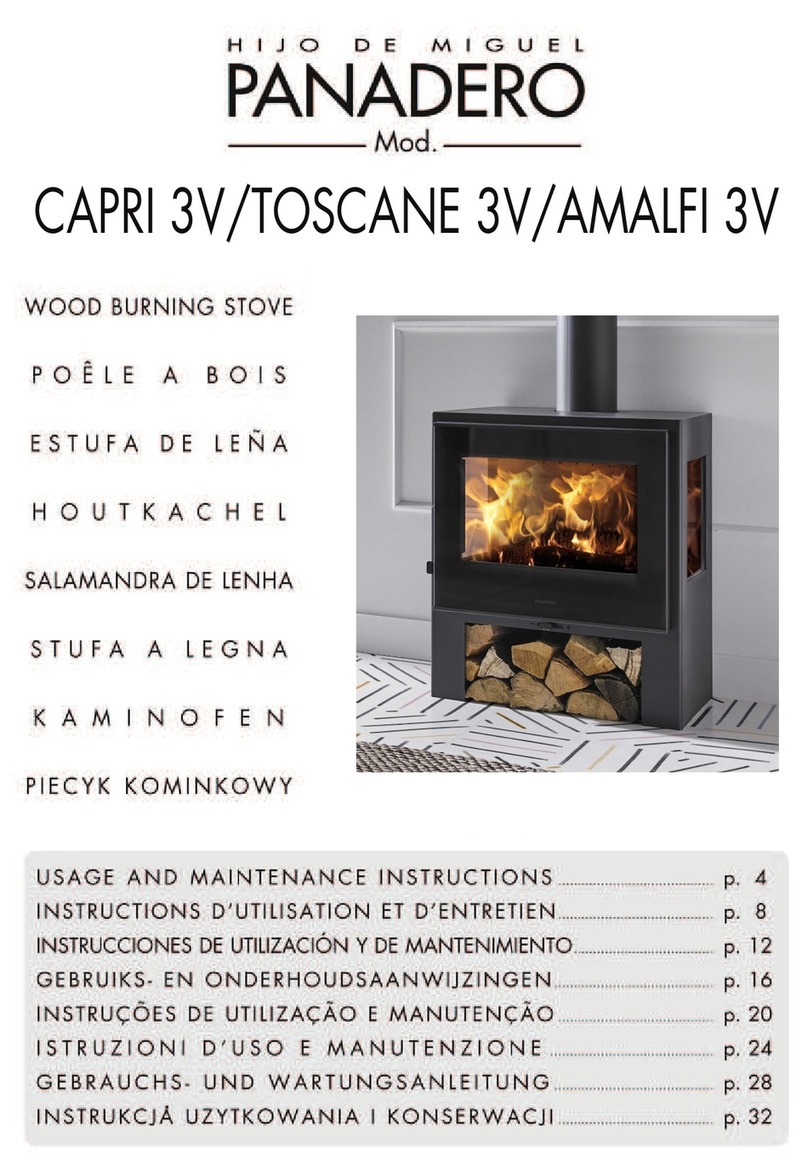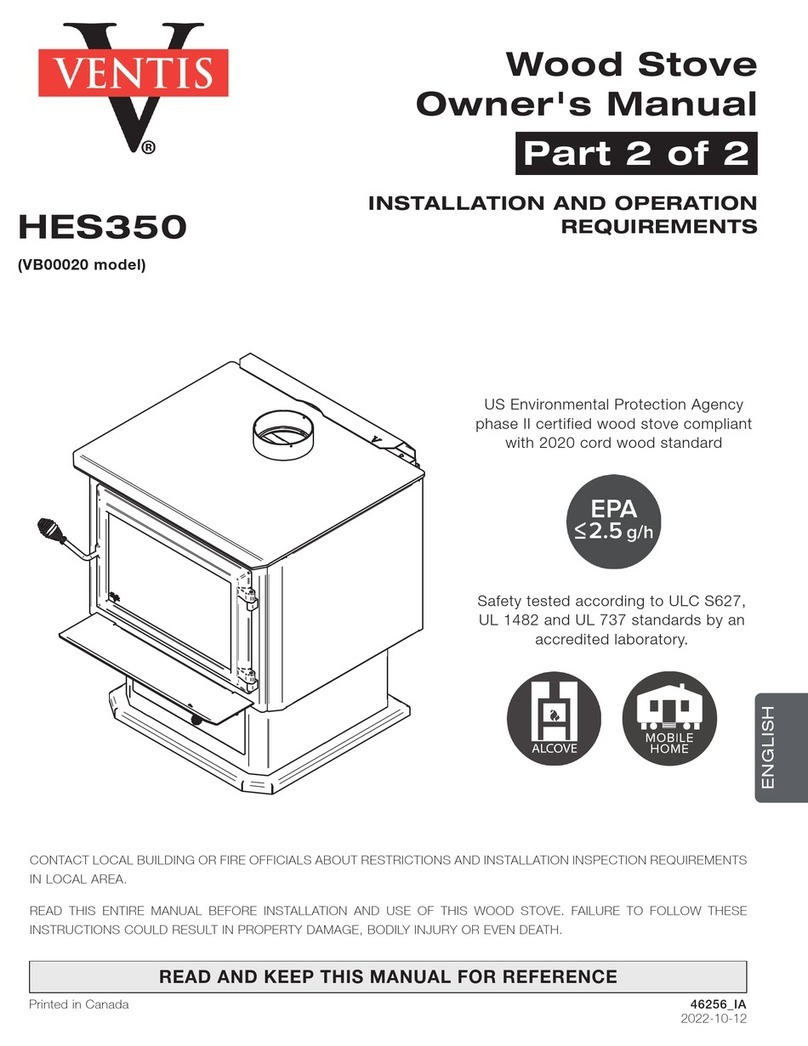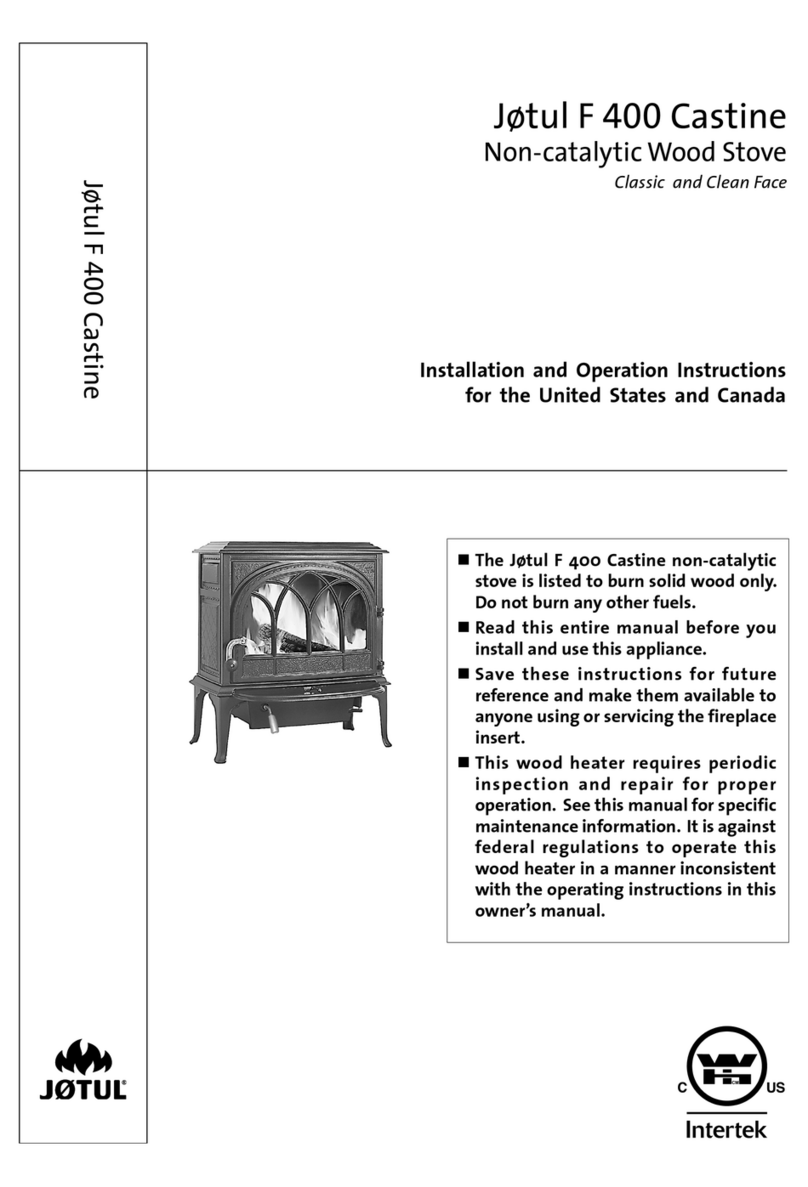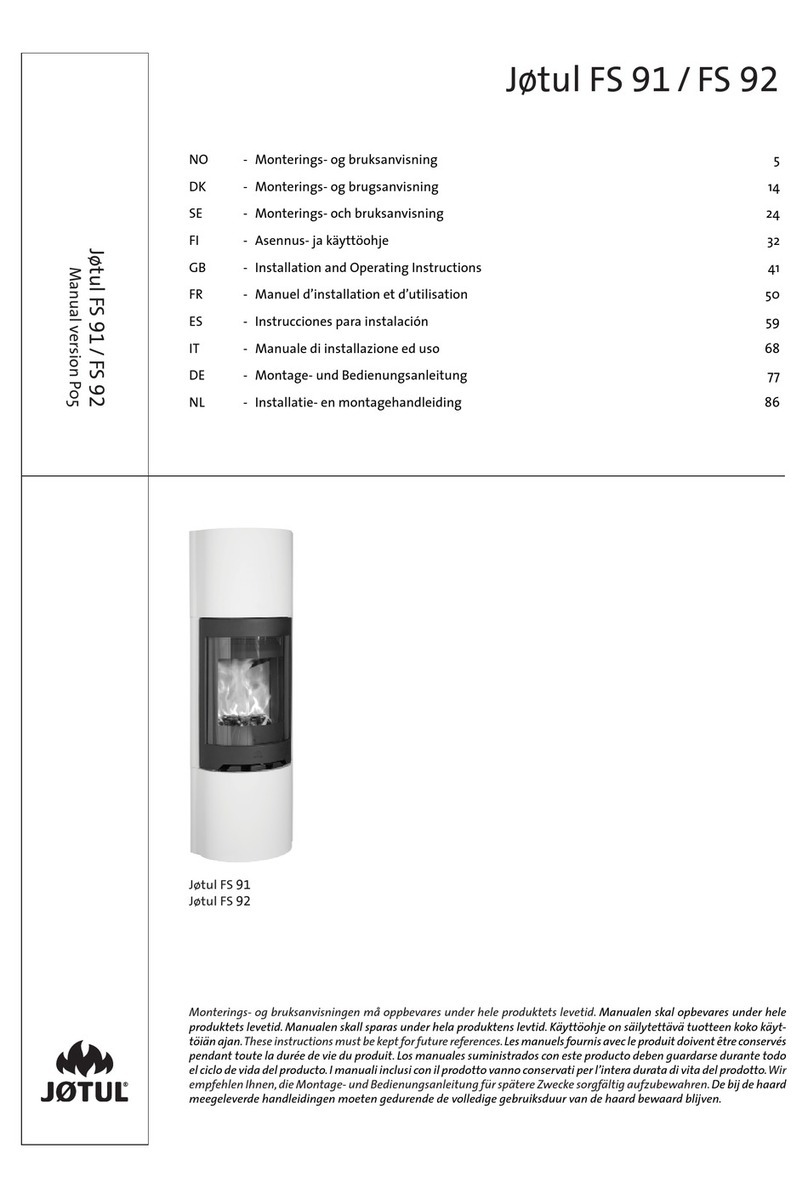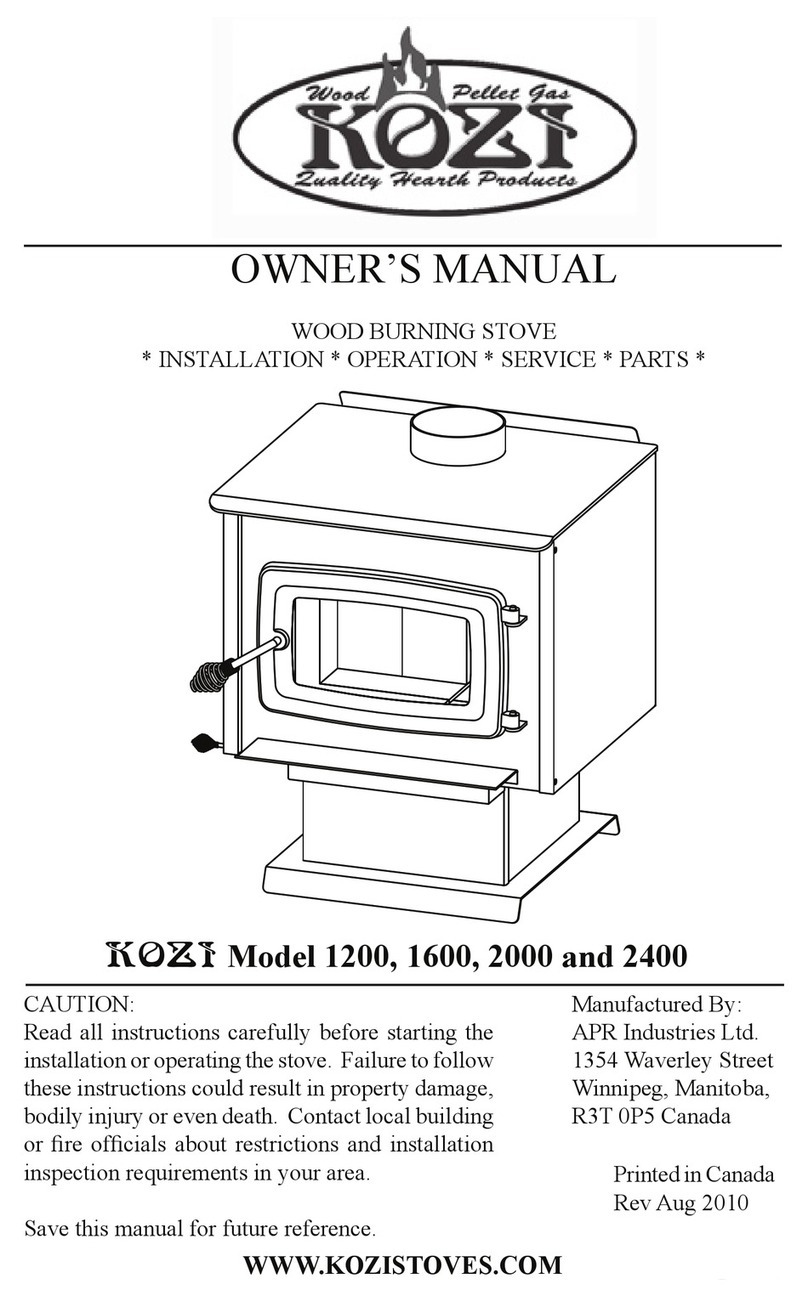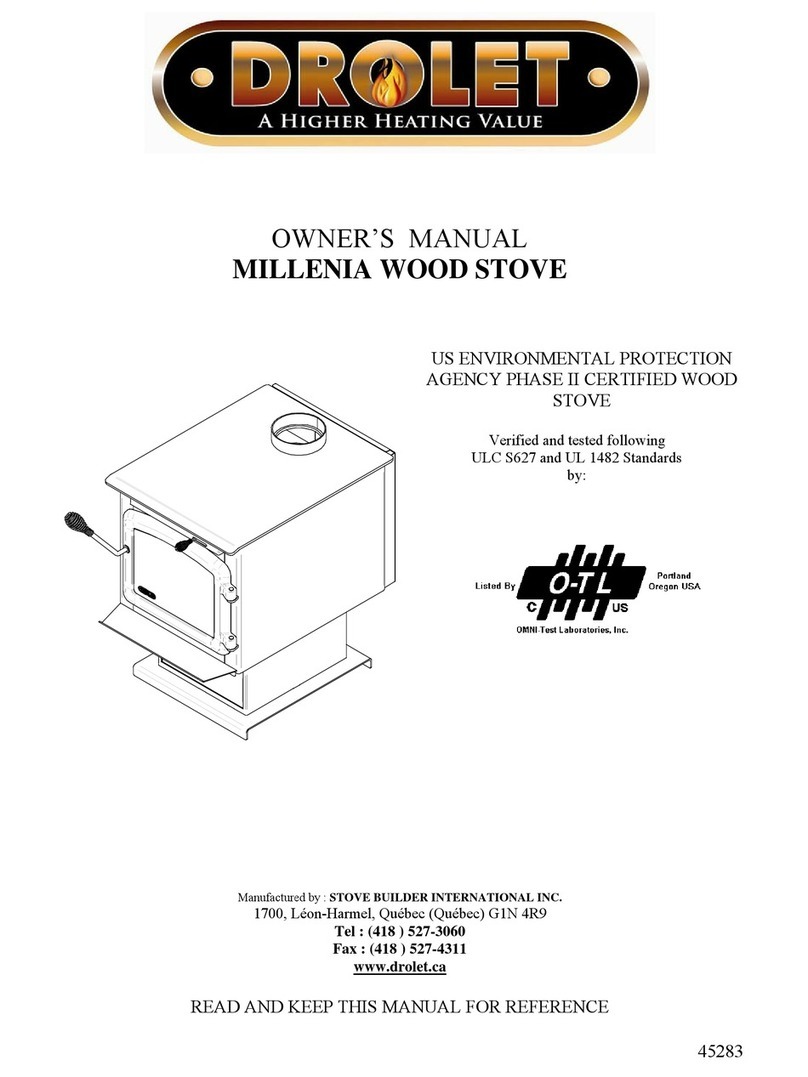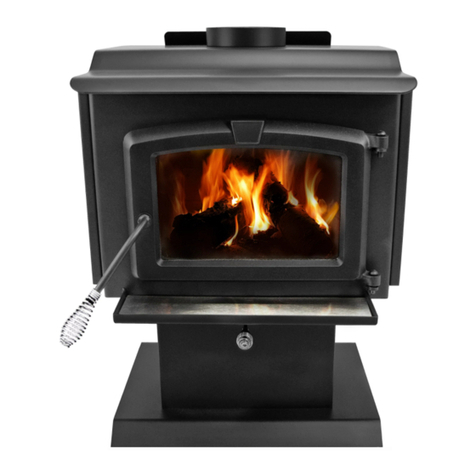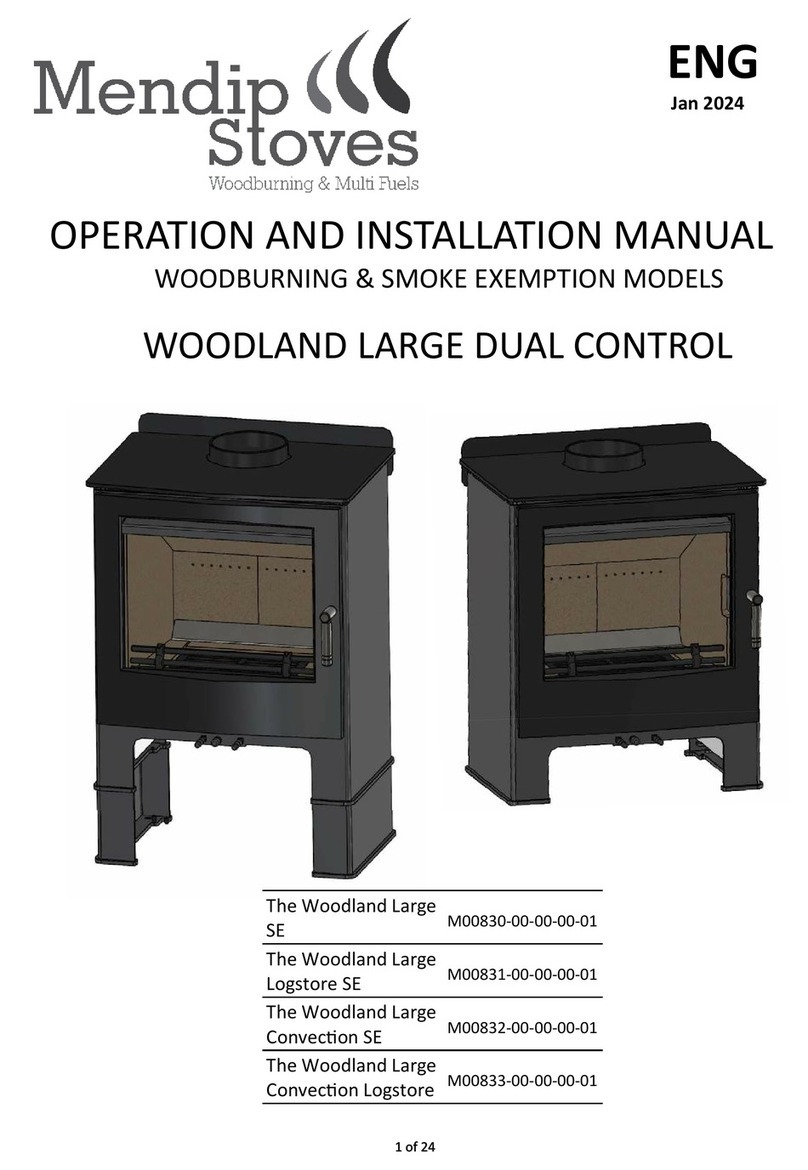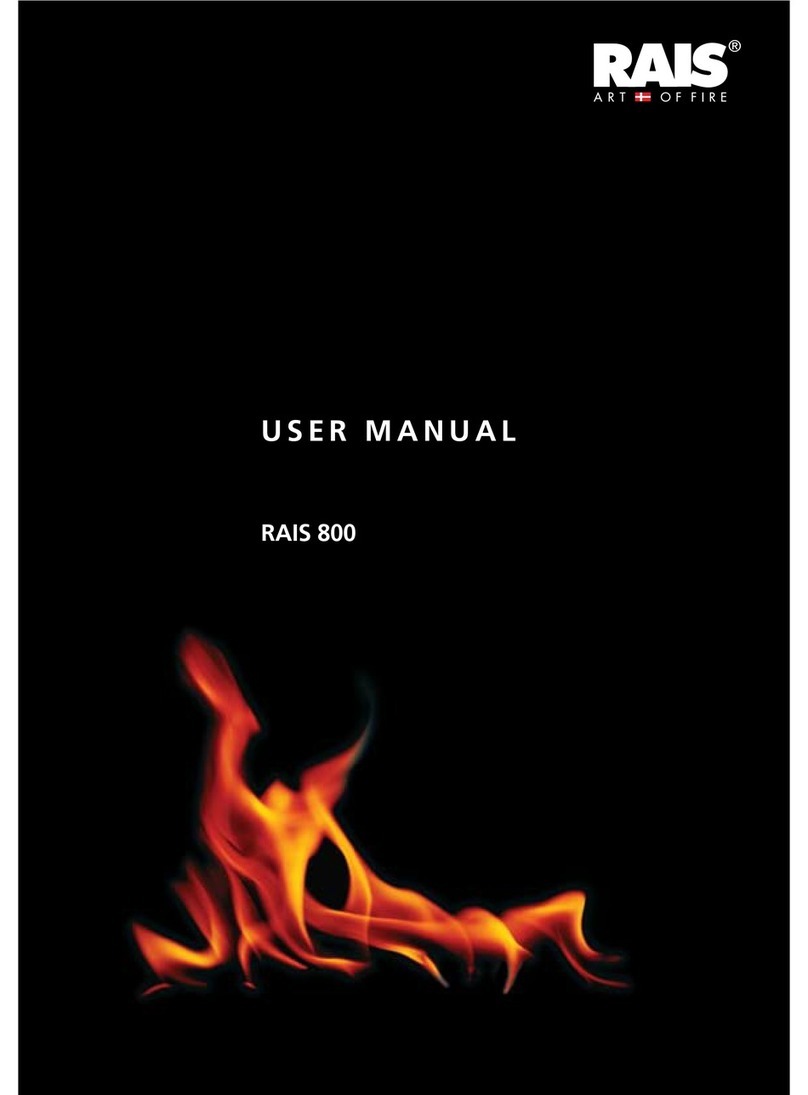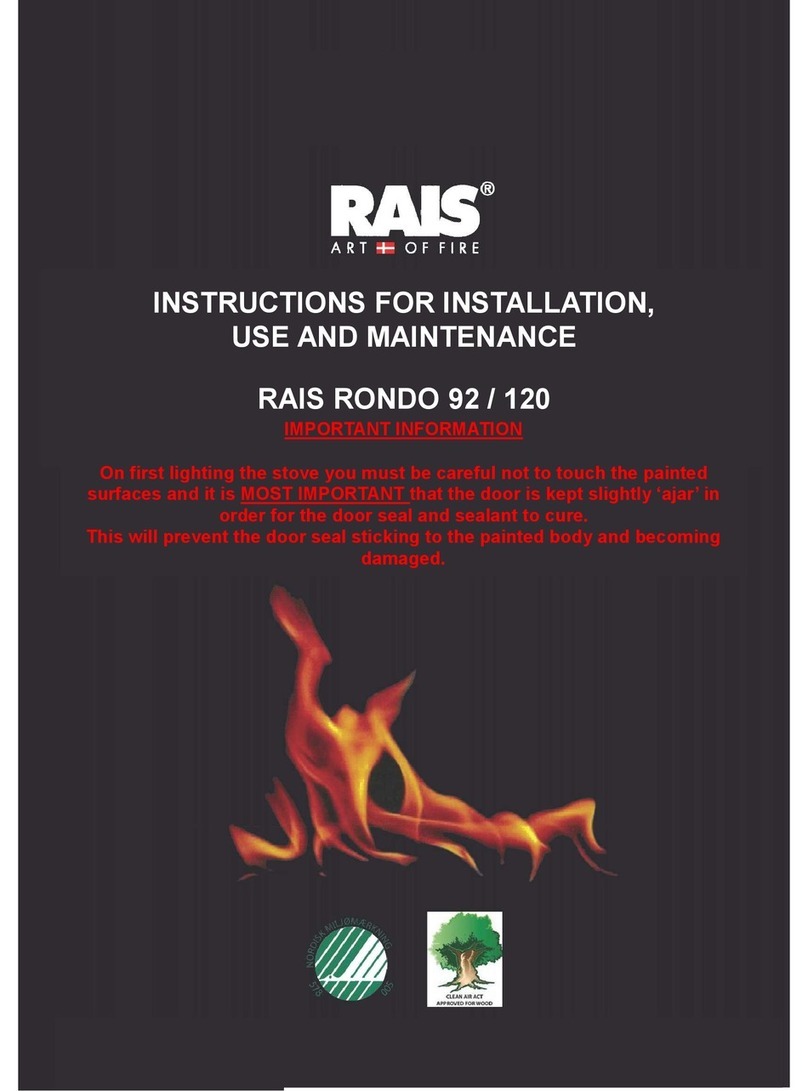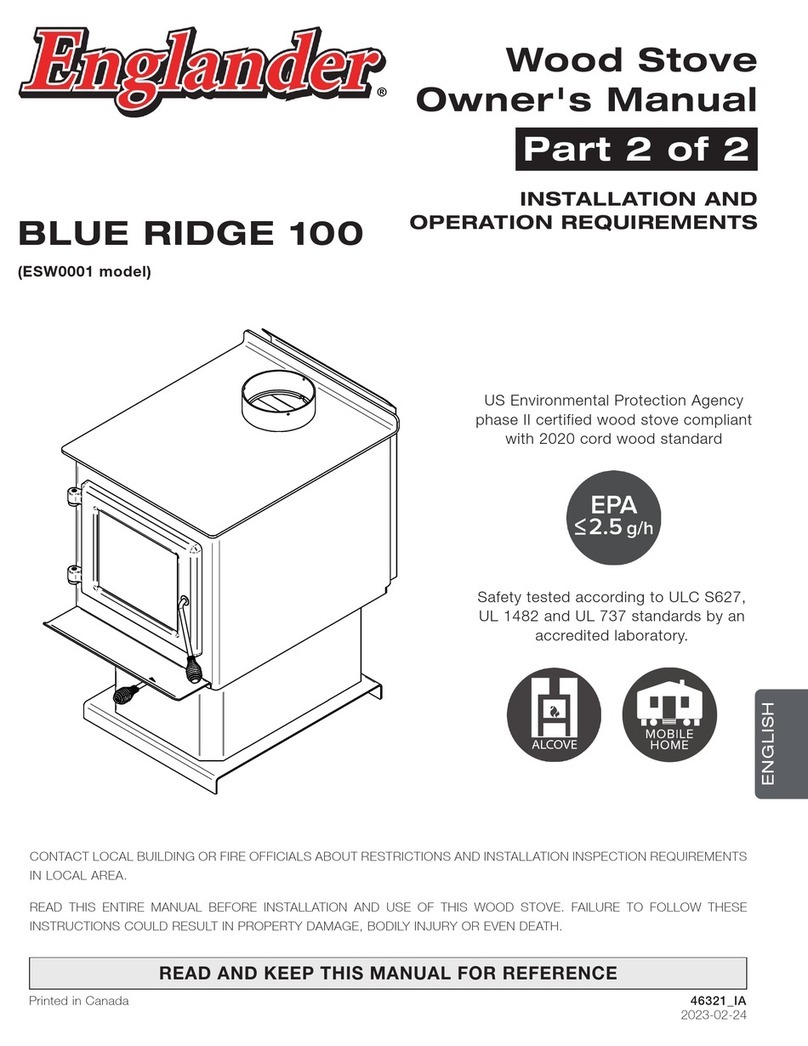
8
139682-R04 F 600 9/19
5.0 Operation
Please read the following section completely before building a
fire in your new Jøtul F 600 Firelight.
5.1 Combustion Efficiency
The Jøtul F 600 Firelight has an EPA tested High Heating Value
(HHV) efficiency rate of 74.18. There are, however, aspects of
efficiency that you should be aware of in order to get the most
from your stove. Operation habits and fuel moisture can have a
significant effect on efficiency. Poorly seasoned wood having a
higher than optimum moisture content, can reduce the amount
of energy transferred to the living area as a result of the energy
expended to evaporate the excess fuel moisture in order for the
wood to burn. Operational habits - such as not building a robust
kindling fire to readily ignite the larger fuel pieces - can result in
an inefficient,smouldering fire.Additionally, most modern wood
heaters’optimum performance and efficiency are at the medium
to medium-low burn rates.
The location of the stove can also have a significant effect on
heating efficiency, primarily in regard to distribution of the heat.
For example, a wood heater centrally located in an open living
area,will likely provide better circulation of heat than will a stove
located in a room adjacent to the larger living area.
5.2 Minimize Carbon Monoxide Emissions
Testing the F 600 Firelight to CSA B414.1-10 resulted in a carbon
monoxide emission rate of 140.33 grams per hour. There are,
however, aspects of CO that you should know. Most all means
of combustion produce CO,including wood fires.You can greatly
reduce CO levels by maintaining a well-established fire and
avoiding operation that produces a smouldering, smoky fire.
IWe highly recommend that a CO monitor (detector) be installed
in the same room as the stove. The monitor should be located
as far away as possible from the stove to avoid alerts when the
doors are opened.
5.3 Wood Fuel and Performance
The F 600 Firelight is designed to burn natural wood only.Higher
efficiencies and lower emissions generally result when burning
air-dried, seasoned hardwoods,as opposed to softwoods,green or
freshly cut hardwoods.Wood that has been air-dried for a period
of 6 to 14 months will provide the cleanest, most efficient heat.
Wood seasoned more than 2 years will burn too quickly to take
advantage of the stove’s low end efficiency strength.
A seasoned log will have check marks on the ends and be lighter
than an unseasoned log which will show little or no check marks.
We recommend using a moisture meter to determine the
moisture content of your wood. For purposes of home heating,
your fuel should have a moisture content between 12 - 20%.
Wood with higher moisture content will burn, however, very
inefficiently. Most of its heat value will be lost to driving water
out of the wood. Worse, that moisture will condense as creosote
in the relatively cool chimney flue, increasing the potential for a
chimney fire. Use of unseasoned wood defeats the purpose
of any modern wood-burning stove.
BURN UNTREATED WOOD ONLY. DO NOT BURN:
• Coal;
• Garbage;
• Synthetic fuel or logs;
• Material containg rubber, including tires;
• Material containing plastics;
• Waste petroleum products, asphalt products, paints,
paint thinners or solvents;
• Materials containing asbestos;
• Construction or demolition debris;
• Railroad ties or pressure-treated wood;
• Manure or animal remains;
• Lawn clippings or yard waste;
• Salt water driftwood or other previously salt-water;
saturated materials;
• Unseasoned wood;
• Colored paper, or
• Paper products, cardboard, plywood, or particle board.
(The prohibition against burning these materials does
not prohibit the use of fire starters made from paper,
cardboard, saw dust, wax or similar substances for the
purpose of starting a fire.)
• Burning of any of the materials listed above can result
in the release of toxic fumes, cause smoke, or render the
heater ineffective and cause smoke
• NEVER USE GASOLINE, GASOLINE-TYPE LANTERN FUEL,
KEROSENE,CHARCOAL LIGHTER FLUID OR SIMILAR LIQUIDS
TO START OR“FRESHEN-UP”THE FIRE. ALWAYS KEEP SUCH
LIQUIDS AWAY FROM THE HEATER AT ALL TIMES.
NOTE:Avoid letting logs rest directly on the glass panel.The logs
should be spaced off of the glass enough to allow for proper air
flow within the firebox.
5.4 Air Flow and Control
Your F 600 Firelight is designed to support efficient combustion
and heat transfer by directing air through the stove in two
separate channels; Primary and Secondary. See figure 11.
Primary air is manually regulated by a lever
and valve at the front of the stove. See figure 11.
The valve position controls the volume of primary air entering the
firebox and thereby affects fire intensity, heat output and burn
time. Primary air is directed to the main body of the fire through
air ports at the front of the stove.Separate manifolds at each side
also deliver pre-heated primary air at top of front plate to create
an ’air-wash” to help keep the viewing glass clean.
Secondary air allows combustion of volatile gas and other by-
products of primary combustion that would otherwise enter
the atmosphere unburned. This unregulated air is preheated as
it passes over the back of the stove and through a stainless steel
manifold at the top of the firebox. This additional hot oxygen
allows any unburned gasses to be burned inside the stove. The
action of secondary combustion can be readily seen through the
